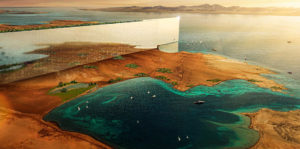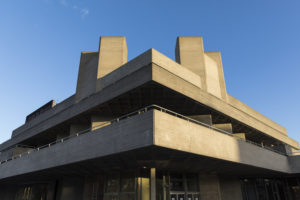London is a cruel city. Live here long enough, and you will see everything familiar vanish: neighbourhoods transformed, venues closed, old friends moving on. There is just one permanent thing in the capital, one thing that transcends the flux of urban life, and that is the river snaking through its centre.
The Thames is the only place I feel truly rooted, even if it too is rushing out to sea, as the poet John Denham wrote, “like mortal life to meet eternity”. The river is the reason London is here: it is a primordial presence in the city, with its murky waters and oozing tidal beaches.
It is also a human artefact, its banks and bridges part of the ever-changing fabric of the city. The spaces and structures along the Thames determine who can enjoy its redemptive powers, and in what ways. With sensitive design, London’s riversides could be an unparalleled treasure — but we’re not there yet.
The Thames encompasses many worlds, from the bucolic neighbourhoods of Kingston to the pincushion of skyscrapers that is the Isle of Dogs. That is what makes it a true index of London’s character, for the city remains in many ways a disparate collection of villages. And the riverside is at its best when it provides an intimate dialogue of public and private, something all too rare in the contemporary mega-city. In Wandsworth and Battersea, for instance, the Thames path passes riverboat communities and occasionally zig-zags, in almost labyrinthine fashion, around the contours of low-rise apartment buildings. The private spaces enrich the public by making them less anonymous, but there is enough distinction that you don’t feel like an interloper.
In all of these ways, the Thames allows Londoners to see and know their city, and discover its hidden corners. These are glimpses of how the river could tie the city together.
But only in the past 50 years has it been possible to imagine the Thames as something Londoners share in common, and that prospect is rapidly disappearing again. Before the Seventies, the river had for centuries been dominated by warehouses, docks, shipping and industry; more toil and smoke than afternoon walks. This was the often brutal and impoverished landscape that Dickens observed throughout his life, having worked as a boy in a shoe-polish factory on the Thames’s shore (now the site of Charing Cross station), and which gave him the unforgettable opening of his last novel, Our Mutual Friend, where a pair of scavengers salvage a corpse from its waters.
All that is gone now, apart from some exotic place-names recalling the goods that used to arrive here. Since the Nineties, London has found a new role as a safe deposit box for global wealth, especially through its property market. This change in fortunes has brought new forms of architecture, in particular high-rise glass apartment buildings, with the most profitable locations overlooking the river. As though by some reversal of the tide, the gritty poverty of Dickens’s Thames has turned to pristine wealth, and the capitalism Britain once exported to the world along this river has returned to colonise its very banks.
As a result, the public potential of the Thames is being squandered. Long stretches between Putney and Vauxhall, for instance, have become a monoculture of generic glass towers. Sometimes these protrude right out to the waterside, forcing you to walk around them, and are often arranged on plots of private land with signs reminding passers-by not to skateboard, cycle, or walk dogs. Such developments are to a thriving urban realm what a commercial plantation is to a forest; instead of ecosystems you get sterile, monotonous repetition. Signs of life are rarely seen in these compound-like spaces, which may reflect the fact that many of them are just storing capital for foreign investors. Or it may simply reflect that there is no longer anything interesting to do in these areas.
In the Eighties, during the first phase of redevelopment on the Thames, new apartment blocks still reflected the capital’s traditional character as a low- and medium-rise city of brick. Now, thanks to the growing flood of commercial development, London is rapidly acquiring a high-rise skyline. These structures are obvious symbols of the city’s disturbing inequality.
This trend is especially destructive in the river’s historic areas, where monuments are being crowded out by luxury apartments and offices. At the recent Battersea Power Station development, new buildings have squeezed the historic structure into a kind of glass corset. The same will happen to the South Bank if the enormous new building proposed there, 72 Upper Ground, is not stopped by governmental review.
It’s worth noting here that, along the Thames as elsewhere in the capital, it isn’t just a case of private developments reshaping public space, but often of public space itself turning out to be privately controlled. A 2017 Guardian investigation reported that the site occupied by City Hall — the home of the London Assembly and Mayor — was owned by the sovereign wealth fund of Kuwait. A reporter seeking details was bundled away by private security guards and told that “unsanctioned journalistic activity is banned on the site”. Similarly, the land surrounding the ExCel centre in the Royal Docks area, another seemingly public space, belongs to a United Arab Emirates investment vehicle.
Tall glass construction has become emblematic of the degrading of the public realm, though this is not to say it has no place on the river. The Isle of Dogs financial district, as seen from the Docklands Light Railway pulling out of Canary Wharf station, is one of London’s most remarkable sights. Given its economic function and discrete location, this cityscape feels like a more natural part of the capital than what sits across from it on Greenwich peninsula. Here, we see the other downside of post-Nineties commercial development: not dull monotony but a random assortment of architectural gimmicks, including the O2 arena, Ravensbourne University and the mother of all InterContinental Hotels.
The river can accommodate many forms of expression: the modest and the monumental, the intimate and the extraordinary, the classical and the kitsch. But it is a question of composition; every building and landscape depends for its effect on the way it contrasts those surrounding it, just as every musical note and motif does.
How can the Thames achieve a better rhythm? As Rowan Moore has written recently, many of the recent failures stem from familiar political dynamics. Successive Mayors promised to humanise the river, before succumbing to the temptation of huge foreign investment and the accompanying housing and job statistics, however misleading those inevitably are. Meanwhile, any prospect of co-ordinated planning along the river has been scuppered by the financial motives of the multiple boroughs that control its banks.
The obvious answer is to create more scope for unified planning, although that would have its own stifling effects on riverside variety. There should at least be stricter limits on how much of the riverbank in a given area can be given over to private high-rise buildings, as well as a firmer hand used in the application of guidelines, which currently allow developers to claim they are working sensitively with their surroundings, when anyone can see the opposite is true. Above all, the paths that give the public access to the riverside must be protected from further encroachments.
But it may be that London’s characteristic restlessness and impermanence will provide part of the solution. The return to brick-faced building with more traditional proportions, known as New London Vernacular, over the past decade is a reminder that urban form is always shifting in response to economic conditions, political pressures and taste. The boom in glass towers began after the economic slump of the early Nineties; will these monuments to inequality and corporate power make it through the period of hardship ahead? Sadiq Khan’s decision to block Foster + Partners’ 1,000 foot “Tulip” skyscraper in 2019 suggests there is already a political ceiling to the skyline. It’s perfectly plausible that, in a generation’s time, people will have turned against the luxury architecture of today, much as they began dubbing Brutalist buildings “monstrosities” in the late 20th century.
That said, it will require more than a change of style to give Londoners the river they deserve. The Thames Path was designated a National Trail in 1989; today, much of its passage through the capital has been entrusted to private landowners, who have lined it with gates, security cameras and metal fencing. Only a wider revulsion at the erosion of public space in the city, powerful enough to spur political action, will secure London’s most ancient asset for the future.
Disclaimer
Some of the posts we share are controversial and we do not necessarily agree with them in the whole extend. Sometimes we agree with the content or part of it but we do not agree with the narration or language. Nevertheless we find them somehow interesting, valuable and/or informative or we share them, because we strongly believe in freedom of speech, free press and journalism. We strongly encourage you to have a critical approach to all the content, do your own research and analysis to build your own opinion.
We would be glad to have your feedback.
Source: UnHerd Read the original article here: https://unherd.com/



